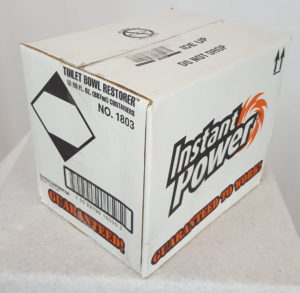A question I received October 31, 2017 through the Contact me form on my website:
Subject: Domestic ground: small quantity exception 173.4 vs limited quantity
Hi Daniel,
I have found your website very helpful. I am wondering if you could expand on your discussion of the small quantity exceptions of 173.4 (https://danielstraining.com/what-is-the-small-quantity-exception-to-the-hmr/) and discuss how it compares with limited quantity. Especially within the United States, since FedEx (and I assume other carriers) does not charge a hazardous materials fee for limited quantity by ground. So, in that situation, which is preferable and why – 173.4 or limited?
Thank you for your consideration,
I was able to reply immediately:
Thank you for contacting me.
I will research your question and reply.
|
If you like this article, please share it using any of the social media platforms identified at the bottom of this article. You’ll look real smart recommending my articles! |
And by November 1st I had an answer for him:
I will try to answer your question below. I will be able to provide more helpful information if you provide a more specific question.
- The small quantity exception is for use only within the U.S. whereas the limited quantity exception is accepted in international transport.
- The small quantity exception is for use only in transport by highway or rail whereas the limited quantity exception is available by all modes (highway, rail, air, vessel).
- The small quantity exception is limited to a net quantity of 30 ml / 30 g for most HazMat and 1 g for others. The gross mass for a package of a small quantity must be no more than 29 kg. The net quantity limit for a limited quantity varies by HazMat but can be much higher. The gross mass for a limited quantity package is 30 kg.
- The big advantage to the small quantity exception, if the above limitations can be met, is that besides the requirements of the exception the HazMat packaged as a small quantity is not subject to any of the Hazardous Materials Regulations of PHMSA/USDOT.
- HazMat shipped as a limited quantity is excepted from a lot of the HMR – notably the need for specification packaging – but the following remain:
- Limited quantity mark.
- Orientation arrows if liquid.
- Shipping paper, unless by ground.
- HazMat labels and other package marks if by air.
- While the small quantity is excepted from all of the HMR the limited quantity is not. Therefore, when shipping a small quantity only the personnel involved in its classification would require HazMat Employee training; those involved in the packing, loading, & transport will not require training. However, a limited quantity is not excepted from the training requirements and therefore all employees involved in its transport must receive HazMat Employee training.
I hope this helps.
Please contact me with any other questions.
|
Contact me with any questions you may have about the transportation of hazardous materials by air, highway, vessel, or rail International and Domestic Daniels Training Services, Inc. 815.821.1550 |
It looks like my information was helpful to him:
Hi Daniel,
I appreciate the very informative response. Based on the key differences you mentioned, I have just started to implement small quantity exemption and have discovered many products that we previously shipped as limited quantity ground are eligible. Thank you!
Best regards,
Conclusion:
I find this type of engagement very satisfying. Some person out there – not a customer – has a good level of knowledge about the Hazardous Materials Regulations but needed some guidance and I was there to provide it. In this situation it appears that my information will help this HazMat shipper to save money on shipping costs while maintaining HazMat transportation safety.

